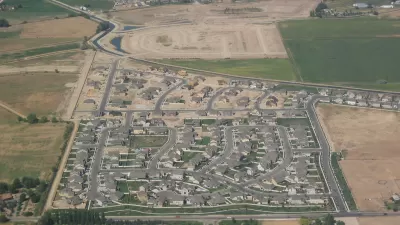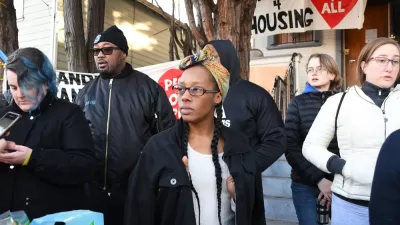Recent American Community Survey data solidifies an underappreciated pattern of migration in the United States: a reversal of the Great Migration of the 20th century, when an estimate 5 million Black Americans left the South.

Data from the Census Bureau’s 5-Year American Community Survey, released in March 2020, provides additional evidence of a great reversal in migration patterns among Black Americans. In the 21st century, Black Americans are moving in massive numbers back to the South—a reversal of the Great Migration that took place in the early decades of the 20th century.
The “New Great Migration” isn’t breaking news, however. Planetizen picked up analysis of the reversal of the Great Migration in 2011, but the pattern goes back further than that, to the 1970s—although the pace of Black American’s southward migration has increased from a trickle to a “virtual evacuation,” according to analysis by William Frey for the Brookings Institution. The effects of the “New Great Migration” are visible in the growth of the “New South,” especially in the states of Texas, Georgia, and North Carolina, as well as the metropolitan regions such as Atlanta, Dallas, and Houston.
“[A]lthough these areas are simultaneously in the midst of new immigrant growth and white in-migration, the continuing ‘New Great Migration’ has served to give Black Americans a large—and in many cases, dominant—presence in most parts of America’s South,” writes Frey.
An entire history of the migration patterns of Black Americans back to the early decades of the Great Migration is available at the link below. Also included are infographics illustrating the data and maps behind the “New Great Migration.”
FULL STORY: A ‘New Great Migration’ is bringing Black Americans back to the South

Alabama: Trump Terminates Settlements for Black Communities Harmed By Raw Sewage
Trump deemed the landmark civil rights agreement “illegal DEI and environmental justice policy.”

Study: Maui’s Plan to Convert Vacation Rentals to Long-Term Housing Could Cause Nearly $1 Billion Economic Loss
The plan would reduce visitor accommodation by 25% resulting in 1,900 jobs lost.

Planetizen Federal Action Tracker
A weekly monitor of how Trump’s orders and actions are impacting planners and planning in America.

Waymo Gets Permission to Map SF’s Market Street
If allowed to operate on the traffic-restricted street, Waymo’s autonomous taxis would have a leg up over ride-hailing competitors — and counter the city’s efforts to grow bike and pedestrian on the thoroughfare.

Parklet Symposium Highlights the Success of Shared Spaces
Parklets got a boost during the Covid-19 pandemic, when the concept was translated to outdoor dining programs that offered restaurants a lifeline during the shutdown.

Federal Homelessness Agency Places Entire Staff on Leave
The U.S. Interagency Council on Homelessness is the only federal agency dedicated to preventing and ending homelessness.
Urban Design for Planners 1: Software Tools
This six-course series explores essential urban design concepts using open source software and equips planners with the tools they need to participate fully in the urban design process.
Planning for Universal Design
Learn the tools for implementing Universal Design in planning regulations.
Caltrans
Smith Gee Studio
Institute for Housing and Urban Development Studies (IHS)
City of Grandview
Harvard GSD Executive Education
Toledo-Lucas County Plan Commissions
Salt Lake City
NYU Wagner Graduate School of Public Service





























